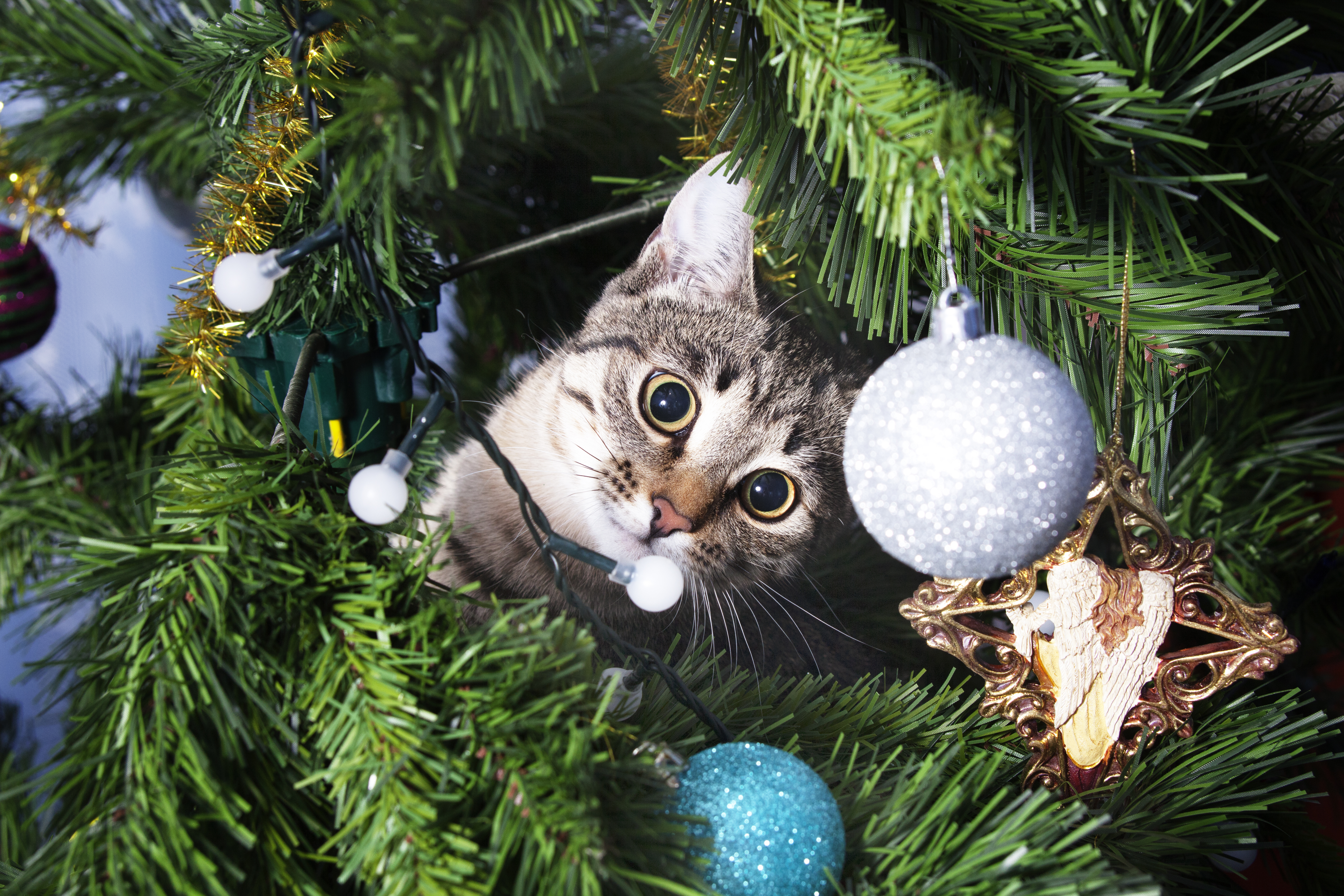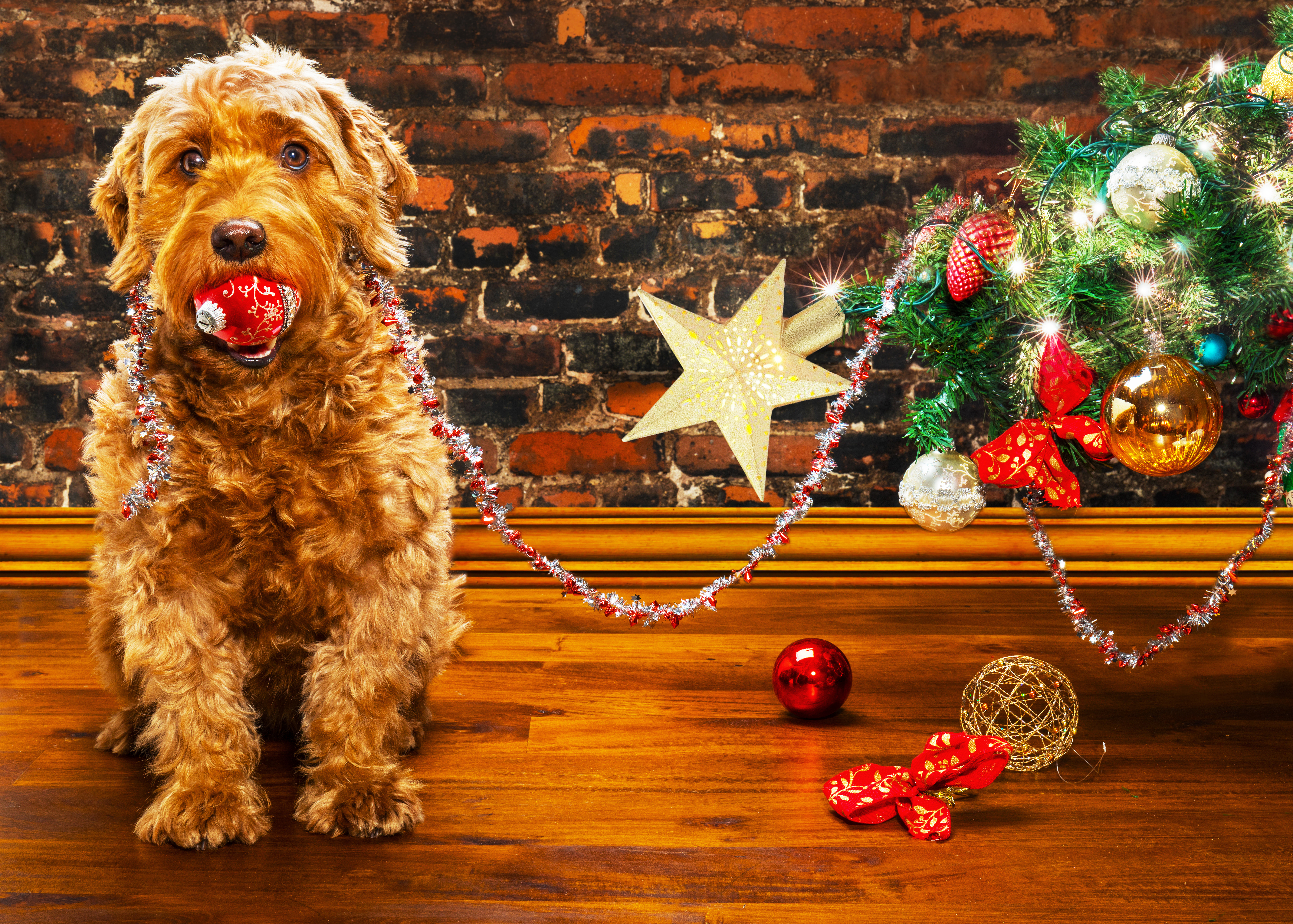
8 Reasons to Keep Your Pet Away from the Christmas Tree
The winter holidays are fast approaching, and many households around the world are starting to put up their Christmas trees. Decorating your Christmas tree and admiring its splendor may be a favorite family tradition, but it could actually be dangerous for other members of your family—your pets.
If you have a cat or dog, you can still enjoy your Christmas tree. You should just be aware of some of the major hazards your tree can pose to your furry friends, so you can keep them safe during the holiday season. If you can’t avoid using some of these holiday hazards for pets, then make sure you are vigilant about keeping your curious pet away from the tree and training them to stay away in future years.

Here are eight tree-related hazards to watch out for:
- Unstable trees: One of the first tree-related hazards is not part of the decorations at all, but rather the tree itself. Unstable trees have the potential to tip over and crush pets if the pet pushes or pulls it over. This is common with cats, who have a tendency to leap at decorations and accidentally pull the tree down on top of them. Make sure your tree is securely anchored in a stable tree stand to minimize the risk of it toppling.
- Tinsel: Shiny, glistening tinsel decorations on your tree are likely to catch the eye of your pets, who might leap and swat to pull them down as if they are hanging toys. Tinsel can be very dangerous to pets if they ingest even a small amount, since it can clump in the intestines and cause a bowel obstruction.
- Ornament hooks: Although some of your ornaments will be hung using string, others may come with a small, wire hook. These flexible hooks tend to fall off of trees if they are not secured tightly, and curious pets may try to eat them if they’re found on the floor. Ingesting these hooks could pose a choking hazard or lead to injury of the mouth, esophagus, stomach and intestines because of their sharp, pointy ends.
- Shattered ornaments: Ornaments made of glass or ceramic can easily fall off the tree and shatter, especially if your pet is using them as a toy to swat at. Broken glass or ceramic shards can be hazardous to your pet’s paws and limbs, as well as their mouths should they try to eat any pieces.
- Pine needles: If ingested, pine needles from live Christmas trees may cause mild digestive upset in cats and dogs because they are not easily digestible. However, their sharp ends could also pose a larger threat in the intestines, where the needles could puncture the bowel or cause an obstruction. Needles from artificial trees are often firmer and can pose the same threat, so you’ll want to prevent your pet from chewing on your tree or ingesting needles from off the floor.
- Chemical preservatives: Some Christmas trees are coated in chemical preservatives to help them maintain their beauty after they are chopped down and erected in your home. Since live trees are often placed in a water-filled tree stand, these chemicals can leech into the water and contaminate it. Although this cannot harm humans, curious dogs and cats may try to lap some water up, which could poison them.
- Electric cords: Some of the most iconic aspects of a Christmas tree are its strands of colorful lights, but these can be enticing to pets. Electrical cords that power these lights or an electric tree topper often run down the base of the tree and toward the nearest outlet. This is the perfect place for pets to settle in and nibble on the cords, potentially leading to electrocution. Electric cord injuries typically affect the mouth, but they can be fatal. If cords are really loose, your pet could also get tangled up in them, possibly strangling them.
- Plant decorations: Poinsettias and holly, two classic holiday plants, are sometimes used as floral decorations for Christmas trees. Unfortunately, these plants are toxic to dogs and cats. If your pet eats these plants off of your tree, they could experience gastrointestinal upset, lethargy or other, worse symptoms of poisoning.
When decorating your tree, try to minimize the number of hazardous decorations you use. Opt for shatterproof ornaments hung by string instead of glass ornaments hung with wire hooks and skip tinsel altogether.

Unfortunately, you won’t be able to remove every potential tree hazard. For this reason, you’ll want to train your pets to stay away from the tree. Try to place the tree away from where your pets hang out, so they aren’t tempted to play with the shiny loose objects. Redirect their attention with food or toys if you notice them playing with the ornaments or cords to help them learn that the tree isn’t a toy.
Finally, make sure you keep the area around the tree clean, vacuuming up any fallen pine needles and ensuring the tree’s base filled with water is covered, so pets can’t access it. By keeping a close eye on the tree and your pets, you’ll be able to ensure your entire family’s safety throughout the holiday season.


